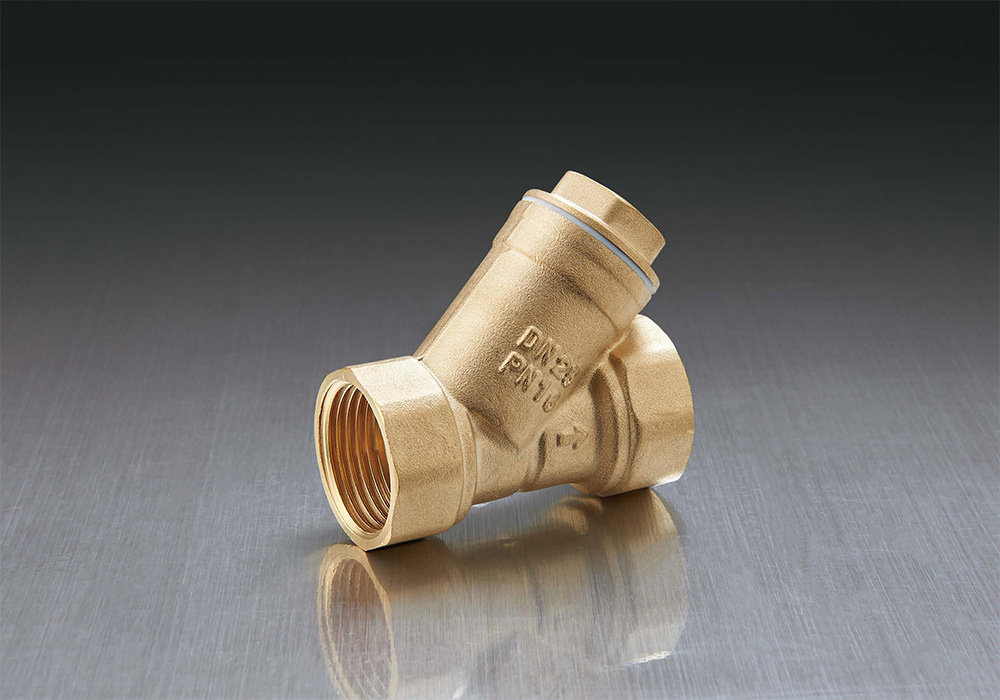2025-08-22
Brass strainer valves factory typically consist of a housing with a mesh or perforated screen inside. This screen traps unwanted particles while allowing the fluid to pass through. The collected debris can be removed by cleaning or replacing the screen, depending on the design.

Key Features of Brass as a Material
The use of brass in manufacturing strainer valves brings specific advantages:
Corrosion Resistance: Brass resists corrosion from water and many mild chemicals, making it well-suited for plumbing and low-pressure systems.
Workability: It is relatively easy to cast, machine, and thread, allowing for precise engineering and reliable sealing.
Strength and Durability: While not as hard as stainless steel, brass provides sufficient mechanical strength for many applications, especially in non-extreme environments.
Cost-Effectiveness: Brass offers a good balance of performance and affordability, which is why it’s frequently chosen for residential and commercial uses.
Types of Brass Strainer Valves
Brass strainer valves come in several designs to suit different needs:
Y-Strainer: The most common type, named for its Y-shaped body. It is installed at an angle and is suitable for horizontal or vertical pipelines. The Y-strainer design allows easy removal of the screen for cleaning.
T-Strainer: This design has a more symmetrical T-shape, often used where space or orientation requirements make the Y-strainer less practical.
Basket Strainer: Larger and often used in systems with higher flow rates. These are more common in industrial applications but may be made from other materials depending on pressure and chemical exposure.
Brass is most frequently used in Y-strainers for residential and light commercial applications where conditions are well within the material’s capabilities.
Common Applications
The versatility of brass strainer valves allows them to be used across a wide range of systems:
Residential Plumbing: To protect faucets, showerheads, water heaters, and washing machines from sediment damage.
Irrigation Systems: Prevents clogging of nozzles and drip emitters by filtering out sand or dirt in water supply lines.
HVAC Systems: Helps keep pumps, heat exchangers, and control valves free from blockages.
Water Filtration Units: Used as a pre-filter to extend the life of finer filters.
Commercial Beverage Equipment: Ensures clean water input in coffee machines or soft drink dispensers.
Maintenance and Cleaning
Brass strainer valves are generally low maintenance. However, periodic cleaning is necessary to maintain flow efficiency. The frequency depends on the water quality and the nature of the system.
Many designs include a threaded cap or plug that can be unscrewed to remove and clean the mesh. It’s important to follow manufacturer instructions when cleaning to avoid damaging the mesh or body.
Over time, mineral deposits or corrosion may affect the strainer's function. In such cases, replacing the internal mesh or the entire unit may be necessary.
Choosing the Right Brass Strainer Valve
When selecting a brass strainer valve, several factors should be evaluated:
Flow Rate and Pipe Size: Ensure compatibility with the pipeline’s size and expected flow rate.
Mesh Size: The fineness of the mesh should correspond to the type and size of particles expected in the fluid. Finer mesh traps more but may clog faster.
Pressure Rating: Choose a valve that matches the operating pressure of your system.
Installation Orientation: Some valves are better suited to vertical or horizontal installation—this should be verified during selection.